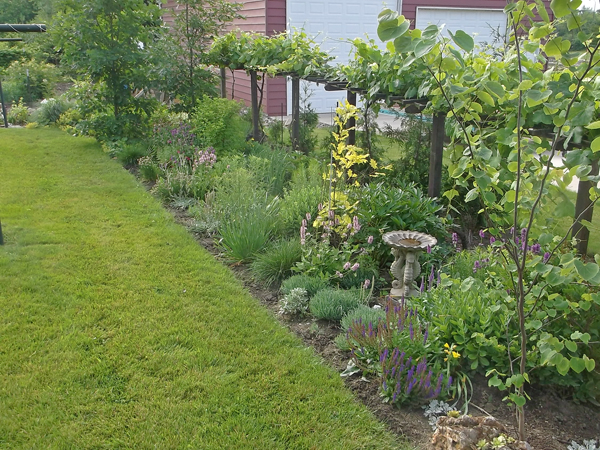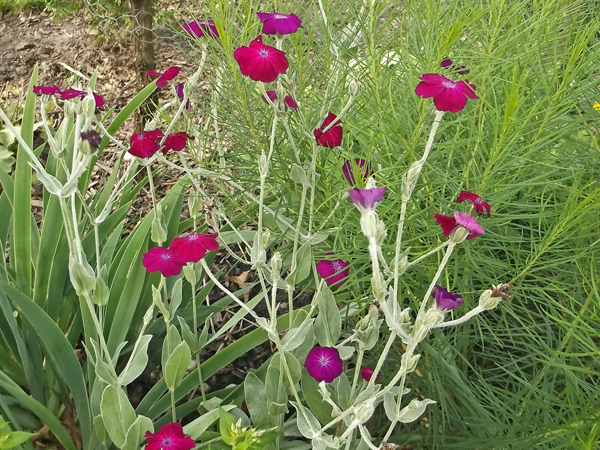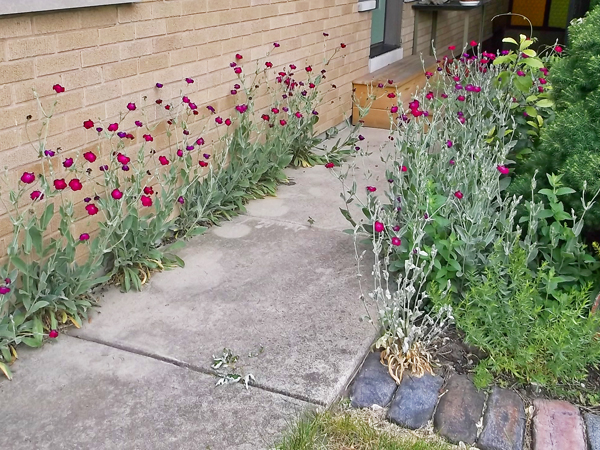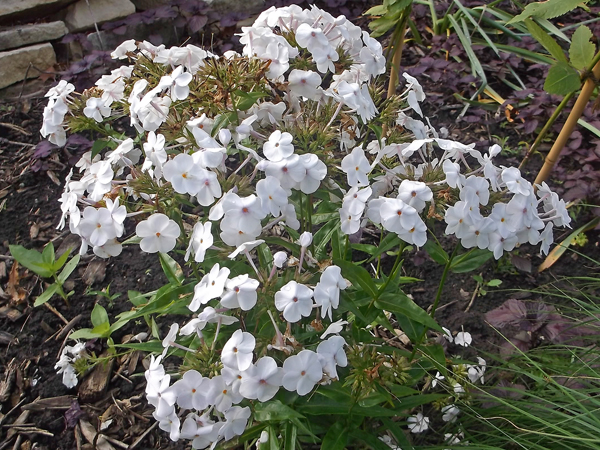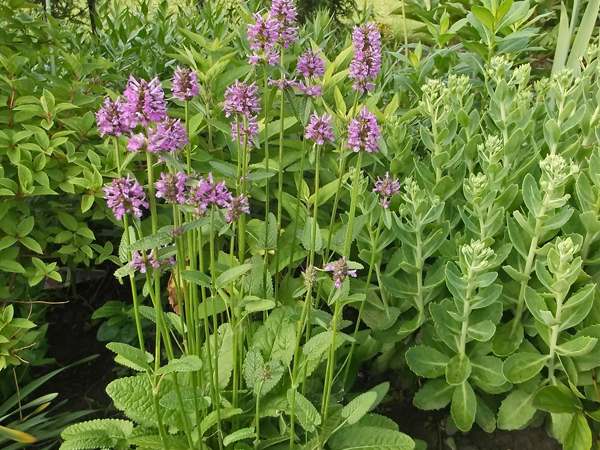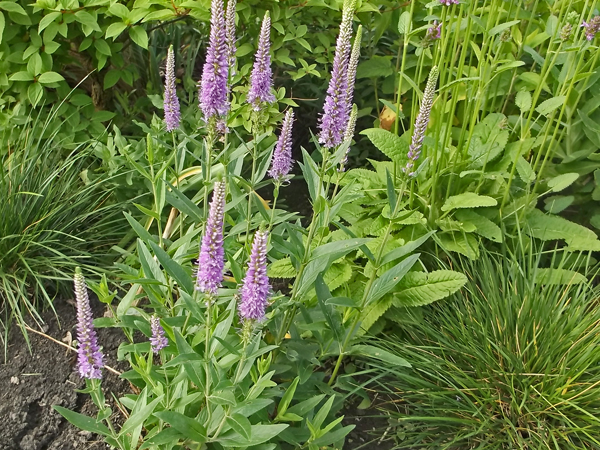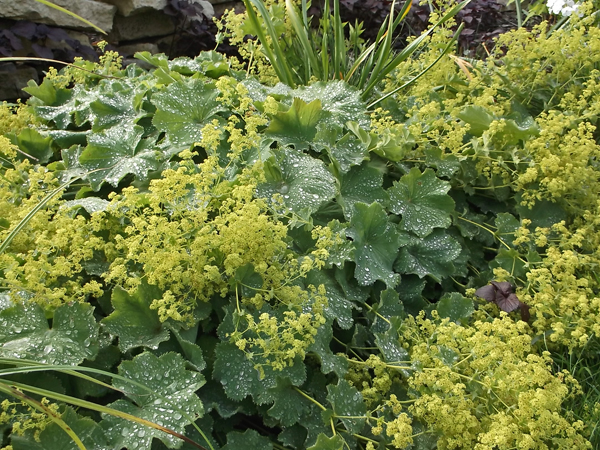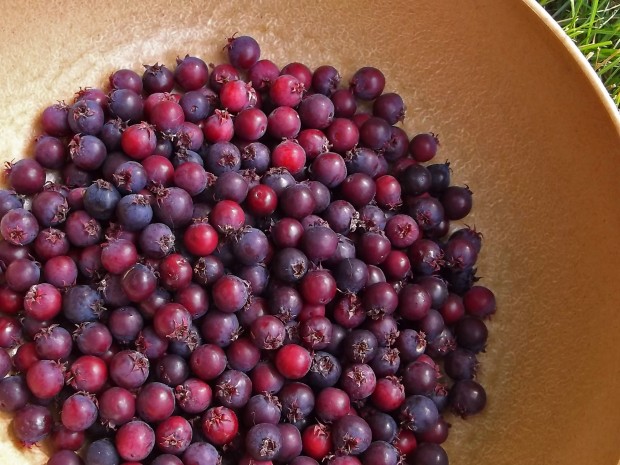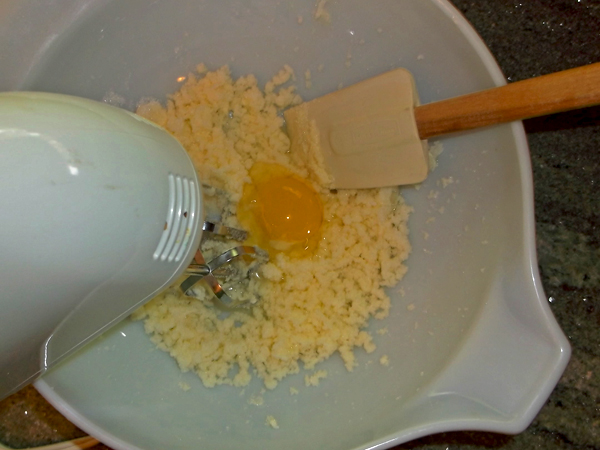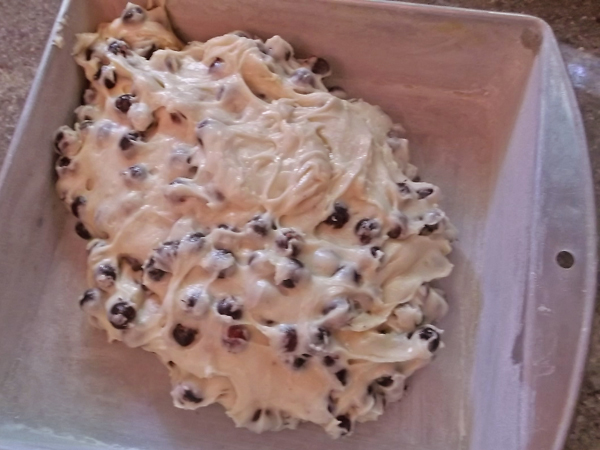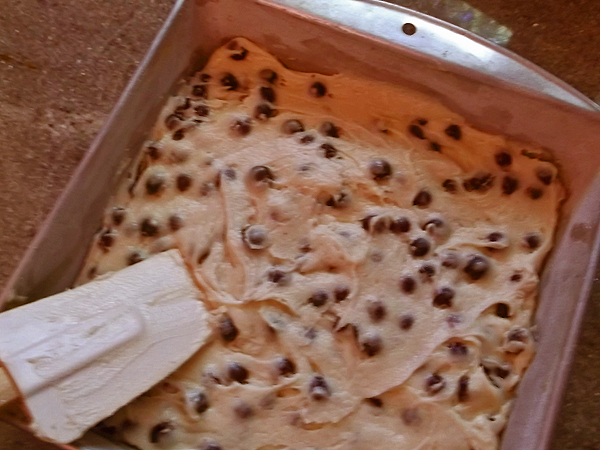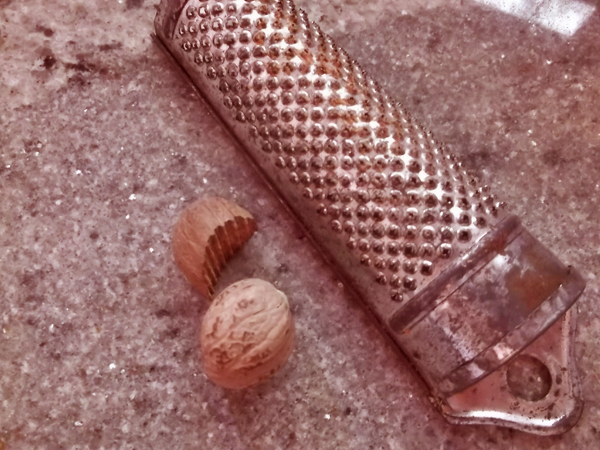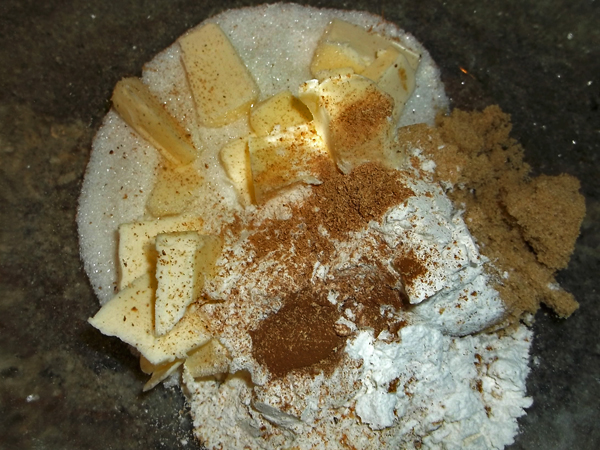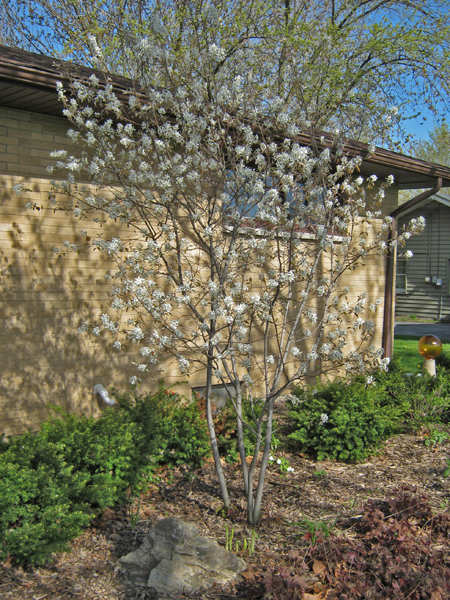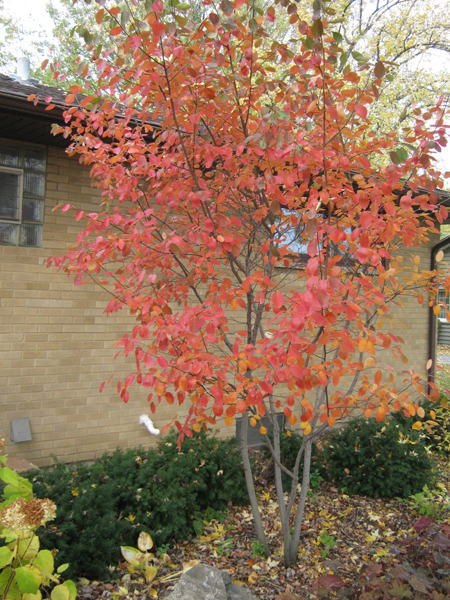After moving into my home in the fall of 2005, I began planning out a rough idea of what kind of gardens I wanted, and where. Most of those of those initial ideas evolved as time went on. Sometimes I simply underestimated my, or the plants, enthusiasm and needed to make the original beds bigger. This was the case with my cut flower garden. Over the years it has changed. I removed the German Bearded Iris (although I kept the blue form) because they only looked great for too short a time, and most of the oversized flowers flopped over in the spring rains – out they went, to the back meadow, next to the daylilies, which were also moved there from the cutting garden because the deer seemed to find them just before their buds opened – too frustrating. Out.
I included many annuals to the bed, in the early years, to add color and fill the gaps between the perennials. Now the big Red Cannas, ‘The President’ or ‘Lincoln’, whose tubers dug and stored unceremoniously in the basement every winter, are planted in a poorly drained corner of the garden along with the self-seeding purple leaved Perilla, also an annual. Perilla is a member of the mint family and used mostly in Asian cuisine and as a natural food colorant. I seeded in some tall zinnias with the Perilla this year – it should be quite a show. The following photographs highlight some of the flowers on display in early July:
For the most part, cool color plants were chosen for this garden, although in mid-spring, orange oriental poppies, ‘Orange Princess’ Trolius, along with pink and burgundy-red Peonies are in bloom. After a first summer of being horrified at how the Sundrops (Oenothera) spread by their roots, I’ve been keeping them in check, and only allowing them limited territory under the grape arbor. I do like their sunny yellow flowers. You can see one has escaped to the front right corner in the above photo.
Rose Campion (Silene coronaria or Lychnis coronaria), shown here with earlier flowering Arkansas Bluestar (Amsonia hubrichtii) behind it, is a short lived perennial. I collected my original plant from an abandoned garden, probably thirty years ago. It will spread by seed, and I let it do so, only pulling out plants that are crowding others, or past their prime. The seed heads can be removed to eliminate reseeding, some seeds will still find their way to the soil, so you will never be without new plants. It knits well with other perennials, and the soft silver leaves brighten the garden. An old fashioned perennial, still worth keeping in the garden.
Yes, Rose Campion takes tough growing conditions in stride. Here, self-seeded in a gap between the walk and foundation.
Most of the tall phlox are just now thinking about flowering, but ‘Minnie Pearl’ has been doing her thing for a few weeks now. Bought at an end of the season sale last year, this is its first growing season in the garden. Behind, the self-seeded Purple Perilla and some Zinnia seedlings will take over the show in a few weeks.
Ah, Piet Oudolf’s Stachys ‘Hummelo’, here with ‘Autumn Joy’ Sedum, is a free flowering, low maintenance plant. So far, it is well behaved with nice foliage below the 18 inch tall flower stems. The deep purply pink flowers harmonizes well with other flower colors.
This Salvia has been blooming for a few weeks, and has another week or two left in it. When the blooms are finally spent, the whole plant will get cut back. Some reblooming should occur.
This deep pink Veronica (possibly “Pink Panther’) is coming on strong, the earlier, blue flowering with silver foliage, ‘Pure Silver’ has been finished for a week or two.
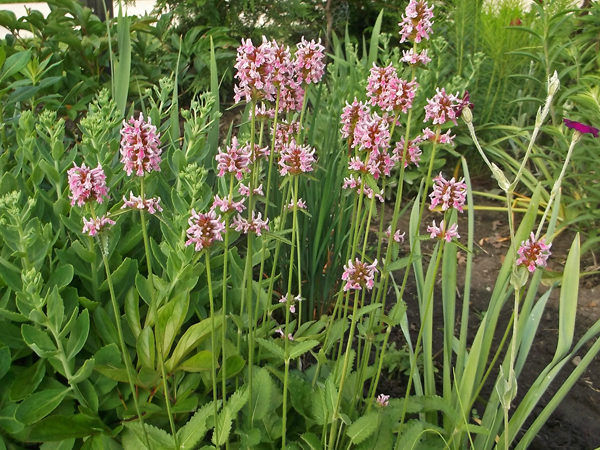 ‘Pink Cotton Candy’ Betony (Stachys sp.) is similar to “Hummelo’ in habit, but has bi-color pink blooms. They look well planted together. Last year, the flower stems on ‘Pink Cotton Candy’ leaned quite a bit, while the ‘Hummelo’ stayed upright. This year both are standing tall.
‘Pink Cotton Candy’ Betony (Stachys sp.) is similar to “Hummelo’ in habit, but has bi-color pink blooms. They look well planted together. Last year, the flower stems on ‘Pink Cotton Candy’ leaned quite a bit, while the ‘Hummelo’ stayed upright. This year both are standing tall.
The plant that never quits, Lady’s Mantle (Alchemilla mollis). Adaptable to many growing situations, it’s a great plant for difficult areas of your garden, sun or shade. This past June, I moved several from the front, to the rear of the bed. First, I took a serrated bread knife ($2 at Goodwill) and whacked off the foliage so I could be sure not to step on, or damage, other plants that may be hiding under the two foot broad canopy of leaves. In just two weeks, the plants looked no worse for the indignity and were covered with new leaves. Irish garden writer, Helen Dillon, in fact, recommends cutting back Lady’s Mantle after flowering, as a quick way to refresh the plant’s appearance. I enjoy the chartreuse flowers and interesting foliage, but the plants got larger than I had expected, and were crowding out other plants, making themselves too dominant a force. Play nice or go home.

